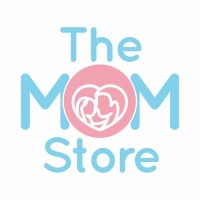
Photo by Carlo Navarro on Unsplash
Things that can take you by surprise as soon as your baby is born:
- Frequent hiccups
You would have felt tiny jerked movements in your womb when you were carrying the baby. They would have been quite many or quite few. This is your baby perfecting the swallowing motion.
Friends and relatives would say you should eat this or that or drink a glass of water. This doesn’t help your fetus – it’s already floating in amniotic fluid!
After the baby’s birth too, you’d see these hiccups. Instead of offering water (which you probably decided not to do until 6 months of age anyway), you can offer the baby the breast or some formula.
And most important: Don’t panic. Hiccups are natural and will go away after some time.
- A baby doesn’t have fingerprints
The fingerprints form around 3 months of gestational age. But they cannot be deciphered very well through a print in a new-born.
At about 3 months of age outside the womb, the fingerprints gain clarity. The palm print is also unclear. Until they are, the hospital would take the baby’s footprint as its identification.
- No tears!
You might not even notice this if you don’t read this list. Because the new-born can make quite a racket. She can howl, wail, coo, and more. You will not be able to ignore the cries when the baby is hungry, wet, or needs caressing and reassurance.
The tear ducts are not ready in new-borns yet. The earliest they may develop is at 2-3 weeks of age.
- Cushy everywhere
You can see a plump baby is soft in every spot. But there are some spots where you don’t expect softness. One of these is the top of the head. The other is at the back of the head. You can, quite easily, feel two soft spots where the fontanels meet.
Don’t dwell too much on these spots. When you feel like giving the head a warm caress or a brush with a soft-bristled brush, go easy on these spots.
By age 2-3 months, these gaps would close.
- Hungry baby suddenly turns into a sleepy baby
You cannot imagine how a howling; wide-awake baby suddenly falls asleep with a bottle in the mouth or at the breast. Finish your meal, baby! There’s not much use saying that to yourself.
The baby has a stomach smaller than the size of your palm. All it needs is those few drops of the first milk and lots of warm swaddling. Then, the more you offer feeds, the better you understand your baby’s patterns.
- No colors
New-borns don’t see in color. First off, they see only very near objects. Then, they only see in black, white, and grey.
Primary colors can be seen after 4-6 months or so. The range at which babies decipher shapes, faces, and objects improves over the passing months.
But right at the beginning? Nope – dark and light are all they see. Eyesight improves visibly in 6 months to 1-year age range and keeps getting sharper.
- No tickles
Did you expect to get a chuckle, or at the very least a smile from your baby? Better luck later.
At this point, you might get a wiggle of the foot if you tickle it, but the baby won’t know it is you doing it.
Surprised that there’s so much you can do with the baby but just not yet?
All in good time!!
 Sargi is a full-time freelancer and mother. She cares for her plants, blogs, a thriving fount of writing inspiration, and bakes on occasion.
Sargi is a full-time freelancer and mother. She cares for her plants, blogs, a thriving fount of writing inspiration, and bakes on occasion.
She prides herself on keeping it real despite how wildly variant her days are.
Found this article useful? Read more blogs at www.themomstore.in.
Disclaimer: The opinions expressed in this post are the personal views of the author. They do not necessarily reflect the views of The Mom Store





